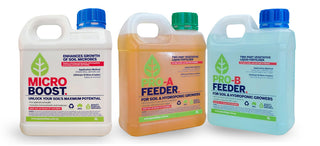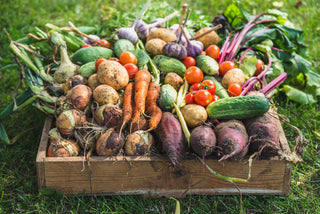Maintaining a healthy and productive vegetable garden in Australia requires knowledge of the various pests that can cause damage. This guide introduces common vegetable garden pests found in Australia and offers strategies for managing them effectively.
- Aphids
Aphids are small, soft-bodied insects that feed on plant sap, causing leaves to curl, distort, and turn yellow. These pests can reduce plant growth and yield.
Control measures:
- Introduce beneficial insects, such as ladybirds and lacewings, to prey on aphids.
- Spray plants with a strong jet of water to dislodge aphids.
- Use insecticidal soap or horticultural oil for severe infestations.
- Cabbage white butterflies
Cabbage white butterflies lay eggs on plants in the Brassicaceae family, such as cabbage, broccoli, and cauliflower. The caterpillars that hatch feed on the leaves, causing significant damage and reduced crop yield.
Control measures:
- Manually remove caterpillars from affected plants.
- Utilise floating row covers to prevent adult butterflies from laying eggs.
- Apply Bacillus thuringiensis (Bt), a natural bacterium, to target caterpillars.
- Cutworms
Cutworms are nocturnal caterpillars that feed on the stems of young seedlings, often severing them at soil level. These pests can cause significant damage to newly planted gardens.
Control measures:
- Create barriers around seedlings using cardboard or plastic collars.
- Handpick cutworms at night, using a torch to locate them.
- Apply beneficial nematodes to the soil to control cutworm populations.
- Fruit fly
Fruit flies, such as the Queensland fruit fly, attack various fruits and vegetables by laying their eggs in the flesh. The larvae feed inside the fruit, causing it to rot and drop prematurely.
Control measures:
- Remove and dispose of any fallen or infested fruit.
- Use fruit fly traps to monitor and control fly populations.
- Apply protein baits or insecticides labelled for fruit fly control, if necessary.
- Snails and slugs
Snails and slugs feed on a wide variety of vegetable plants, leaving irregular holes and a slimy trail behind. They are most active during the night and wet weather.
Control measures:
- Handpick snails and slugs during the night or early morning.
- Utilise copper tape or barriers around planting beds to deter these pests.
- Apply diatomaceous earth, crushed eggshells, or other abrasive materials around plants.
- Two-spotted mite
Two-spotted mites, also known as red spider mites, are tiny pests that feed on the undersides of leaves, causing stippling, yellowing, and eventual leaf drop. They can quickly reproduce and become a significant issue, particularly in hot, dry conditions.
Control measures:
- Closely monitor plants for signs of mite damage and the presence of webbing.
- Spray plants with a strong jet of water to dislodge mites.
- Apply insecticidal soap, horticultural oil, or miticides for severe infestations.
- Green vegetable bug
Green vegetable bugs are sap-sucking insects that feed on various vegetables, including beans, tomatoes, and peas. They can cause discolouration, deformation, and reduced crop yield.
Control measures:
- Handpick and dispose of bugs found on plants.
- Use floating row covers to protect plants from adult bugs.
- Apply insecticides labelled for green vegetable bug control, if necessary.
By understanding the pests that commonly affect vegetable gardens in Australia, you can take appropriate steps to control them and maintain a healthy, productive garden.




